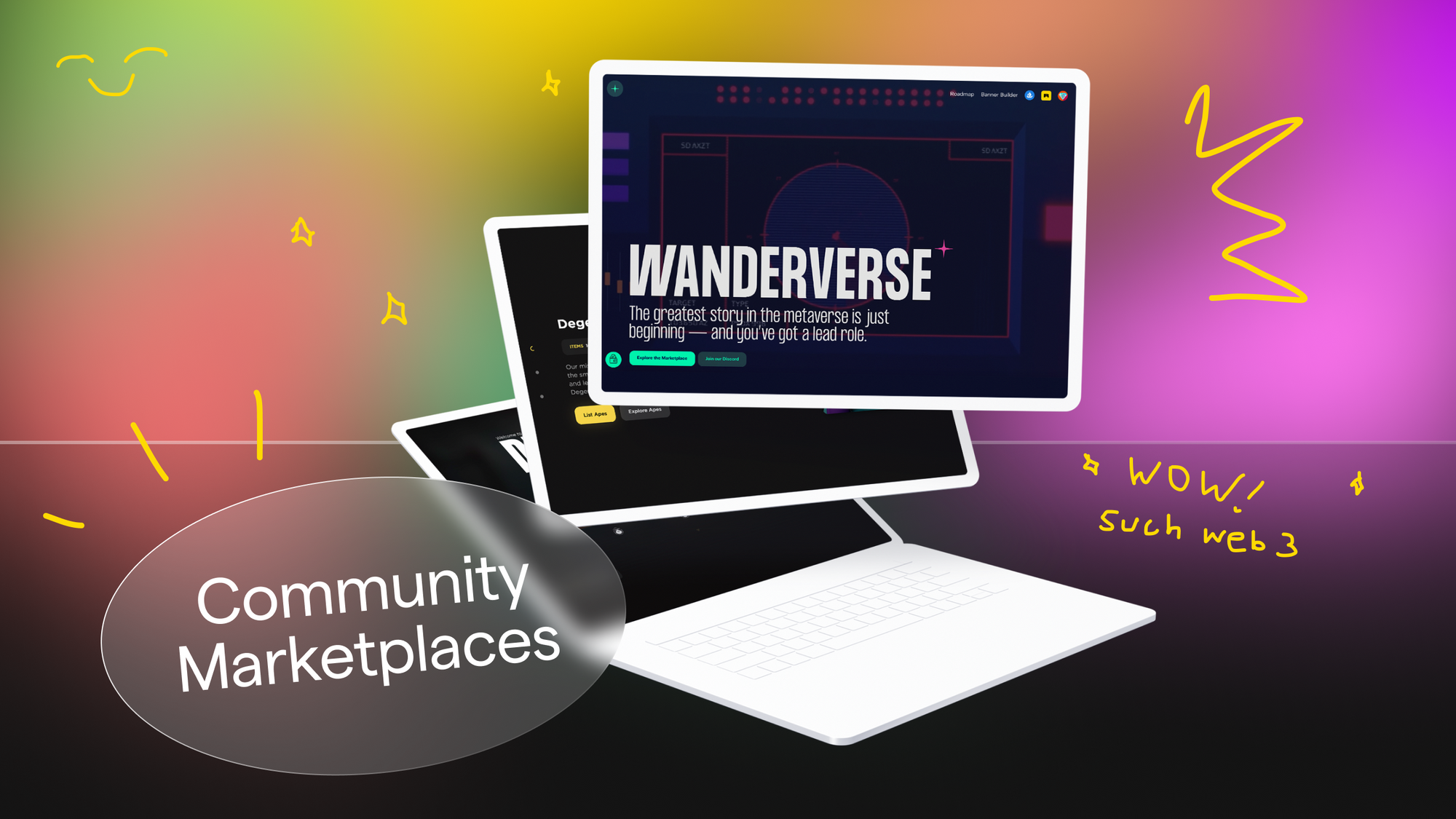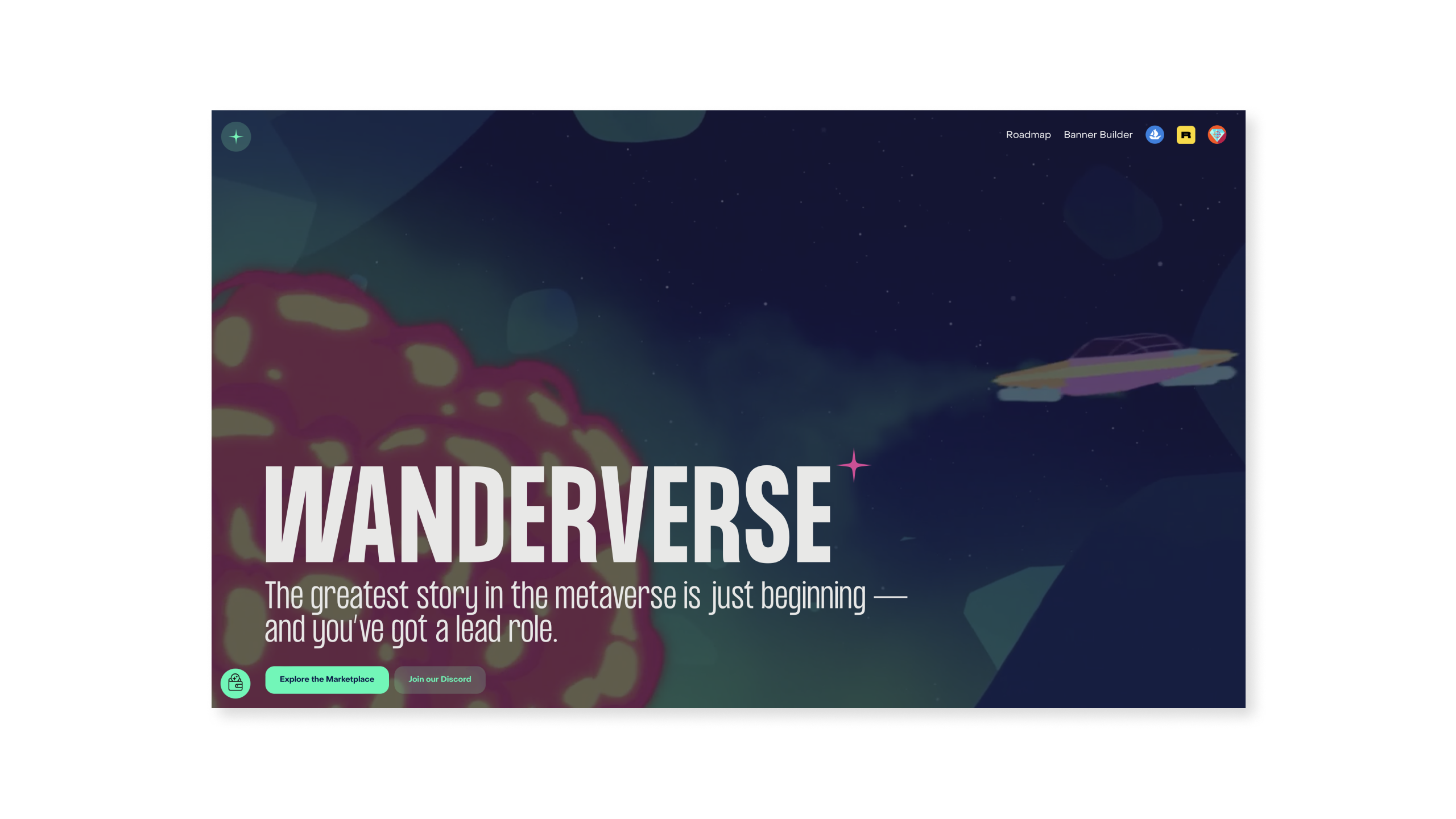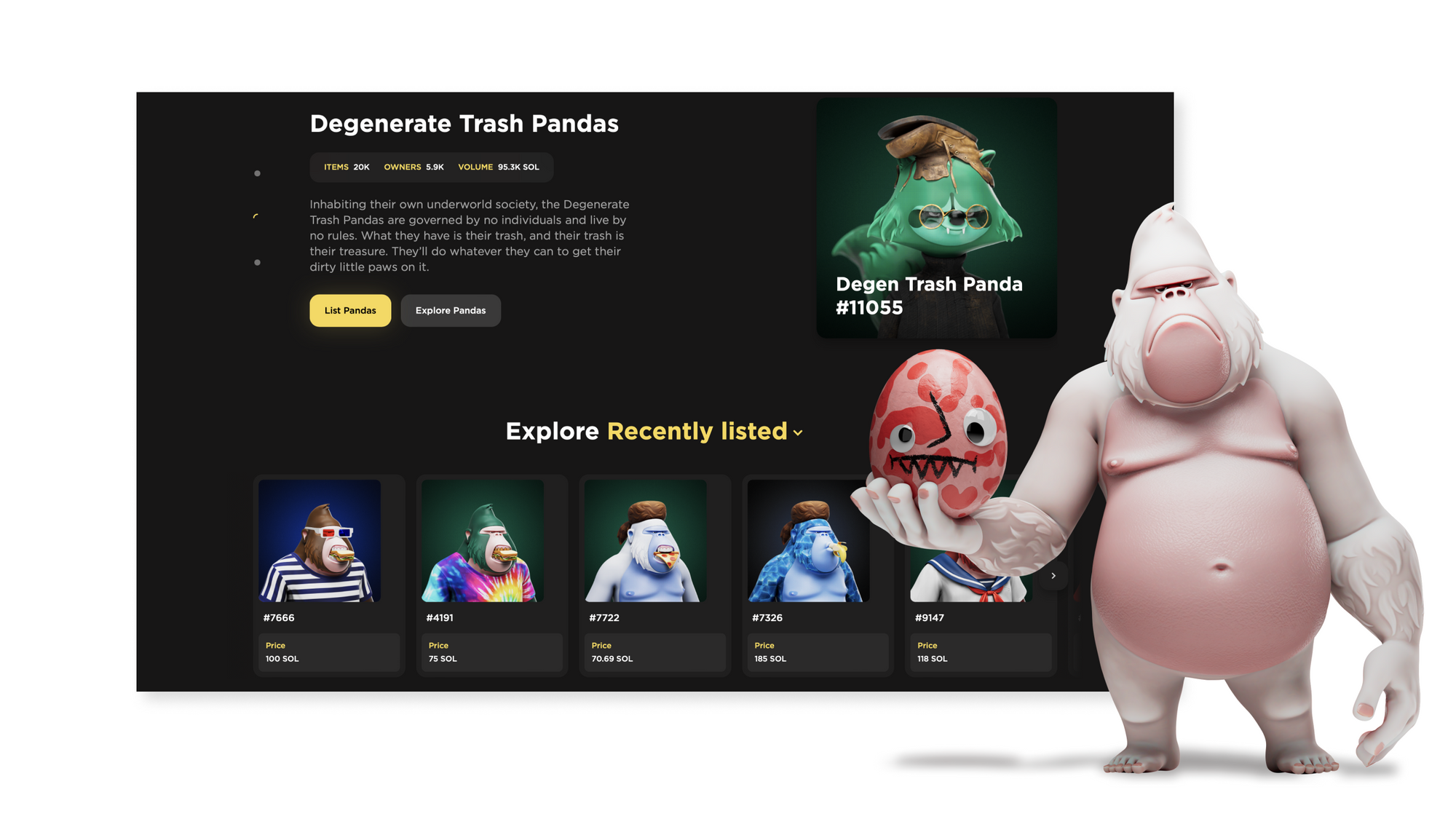Why Community Marketplaces are the future of NFT trading
Community marketplaces have custom branding, lower fees than third-party platform and guarantee you’re buying your NFTs from the real collection.

Ironically, to explain what NFT community marketplaces are and why we're so bullish on them, we'll have to briefly go back to the Web2 space.
If you’ve ever been to an Apple Store, you know how different it is from big box retailers. No cramped rows of metal shelves, no yellow “SALE” signs, zero chance of tripping over stacked boxes. Just a few wooden tables, curated selection of devices, and a lot of light.
Whether you think that Apple Stores are peaceful spaces or you decry them as pretentious modernism, you can’t deny they’re different. More importantly, you can’t deny they’re Apple.
That’s a way of creating a unique, on-brand shopping experience. There are more companies doing that, of course, as brands want to own as much of the customer experience as possible. Tesla, Nike and Gucci all follow the same principle with their retail spaces because it allows them to:
- Create a consistent brand experience up to their own standards
- Fully control pricing & profit margins
- Ensure authenticity of the products
- Own an extra communication channel with their users
Naturally, this applies to online experiences as well. When a customer buys from your website, you can collect email data for future marketing campaigns, you don’t pay another platform’s fees and you can create an on-brand online shopping experience.
Behind all of this is a broader trend: Brands want to go direct-to-consumer, own the full customer experience and cut out stakeholders that charge a fee without adding sufficient value… Does that remind you of the Web3's fundamental principles yet?
Why NFT projects need their own marketplaces
Curiously, this brand-curated customer experience is barely happening with NFT projects so far. Most trading is handled by third-party marketplaces. Even the biggest “blue chip” projects link to external platforms.
Not that custom solutions don't exist. The OG projects like CryptoPunks and CryptoKitties had their own, custom, on-brand marketplaces as far as 5 years ago, way before the NFT market has won over mainstream culture.
However, the community marketplace trend is now resurfacing. Most recently, Meta Angels, Wanderers, Degenerate Ape Academy and CryptoPunks V1 have all launched their own marketplaces.
Because most PFP projects are about the community you get to access and the network you get to build, these teams have decided to build a safe place where the community can trade and navigate their NFTs within the brand's ecosystem. In many community marketplaces, part of the trading fees also goes towards the community/DAO wallet. That way, the community directly benefits from every trade.

All of these custom marketplaces have custom branding, lower fees than third-party marketplaces and guarantee you’re buying from the real collection. In light of all these benefits, this begs a question:
Why aren’t custom marketplaces commonplace in the NFT world?
As we described above, a custom NFT marketplace has many benefits for NFT projects and their communities. But there are barriers before they can become commonplace. Here are the biggest ones:
NFT marketplaces are hard to build from scratch
Most NFT project teams are small. And building a custom marketplace is hard: You need to write the smart contracts, build a front end and get all the custom design assets done.
Compare that to putting a “Buy on [MARKETPLACE]” on your website and being done with it. When developer time comes at a premium, it’s hard to justify putting this much effort into your own marketplace.
Luckily, there are solutions which provide decentralized, open source infrastructure to accelerate building these marketplaces. In our (biased, yet research-based) opinion, the multichain Rarible Protocol is the best infrastructure to build this on.
It’s hard to get people to switch
If you’re an established project, your community is already used to the default solution: Third party marketplaces. Getting people to switch can be hard. While many love the idea of a community marketplace, the biggest question is that of liquidity.
Marketplaces have a virtuous cycle: you need listings to get sales and sales to get listings. So sellers go to the marketplace with the most buyers and buyers go to the marketplace with the most sellers.
But not if you aggregate orders! Because NFT sale orders are on-chain, you can aggregate them on your own marketplace. That makes your community marketplace as liquid as any third-party marketplace.
And instead of building all of that from scratch, you can use Rarible Protocol to minimize the workload and get the needed liquidity.
Now, you know that the main challenges for building your own marketplace are solvable problems. But these marketplaces are just an early version of what they could be.
We believe community marketplaces are the future for many NFT projects. Not only because they're cool, but also because they help push the entire space further.

How community marketplaces help Web3 grow
We can distinguish two specific factors why NFT community marketplaces are crucial for the space's future:
Censorship resistance & decentralization
Currently, NFT trading happens on very few marketplaces. And as much as Web3 folks love to preach decentralization, the entire market is largely dependent on about 5 websites. If those went down, the ecosystem would grind to a halt.
And while it’s pretty unlikely all of them disappear tomorrow, the power is largely centralized. If just one or two marketplaces delist your project for whatever reason, your NFTs stop trading pretty much anywhere.
Meanwhile, when you have your own marketplace and your own smart contract, your community will always be able to trade their NFTs.
Unique features and mechanics
Different marketplaces have different use cases. Some are optimized for trading, others for viewing the art and getting to know the artist. Instead of deciding which you like best, you can build your own.
When you have your own marketplace, you can build any feature or design you want. If you want to focus on the art, make it giant! If it’s all about the numbers, give your community detailed analytics!
And that’s not all—you can enable NFT trades with your own native token, sell physical items along with NFTs, educate your community with bespoke content… essentially whatever you (or your devs) can code, you can have on your marketplace. And you can use that marketplace as the foundation for your NFT brand's ecosystem and foster your community around it.
An early example of a creative feature that can hardly be implemented on a conventional NFT marketplace is the DeGods Paperhands tax—if you listed below mint price or below floor price, you paid a 33.3% fee on top of the regular fees. Did that contribute to driving up the project's floor price? We’ll never know for sure, but it was a creative idea nonetheless that immortalized itself as a meme for Solana OGs, while the collection itself has since earned and proven its 'blue chip' title.
Have an idea for a great community marketplace? Talk to us
As you can see, we’re super excited to see the features community marketplaces build in the future. And if you have a cool idea, Rarible Protocol will help you build it faster. Don't hesitate to contact us so we can start ironing out the details of your dream community marketplace.

